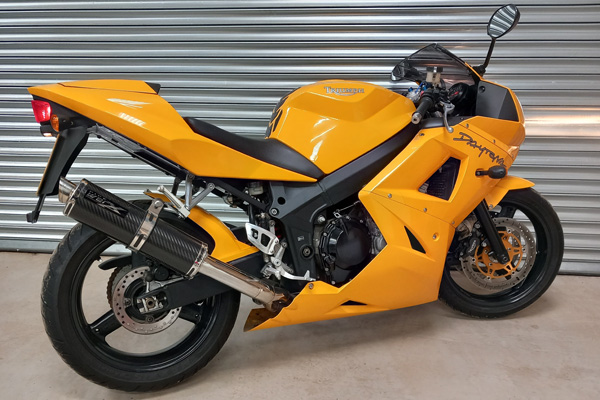
I am sure many of you will agree, that beauty is in the eye of the beholder. So, when I took my first look at the Triumph Daytona, I knew straight away that one day I would just have to buy a model of my own.
It was about 25 years ago when I had the absolute privilege of working on a design engineering project for the Triumph Daytona 600. Our part, of a much larger project, was to take the CAD files consisting of the developed 'A' class surfaces from the industrial design house and convert them into an actual plastic body panel. This technical design work involved off-setting the initial 'A' class surfaces in Creo (ProE) and modelling the various mounting points and fastening positions as features within the 3D CAD model.

Sounds simple, doesn’t it? Well, it wasn’t actually that straight forward. But thankfully, we've had a lot of experience over the years of working on a wide variety of complicated design problems which often includes very complex 'CAD'.
Nowadays the newest model in this series is the 650. This version has had a few mechanical updates compared to the 600 that I actually worked on, (although the bodywork is exactly the same on both bikes), which according to general opinion made it a better bike all round. Additionally, the increased capacity (as maintained by those that know) made it respond and ride how the original 600 should have done. The 600, sort of, being considered as being a bit underpowered and flat through the rev range.

Having been inspired all those years ago by the design work, my aspiration has always been to own a version that we could use and keep, etc. I was, therefore, beyond delighted when I saw an advertisement and did not hesitate to make the purchase. Because in my view, this design, has still got it.
Like what you read? Please give us a like/thumbs up/follow us, so that you are kept up to date with future #SanstecStories and also get in touch, to ask us questions or suggest content or/and particularly to discuss how we can best support you.

